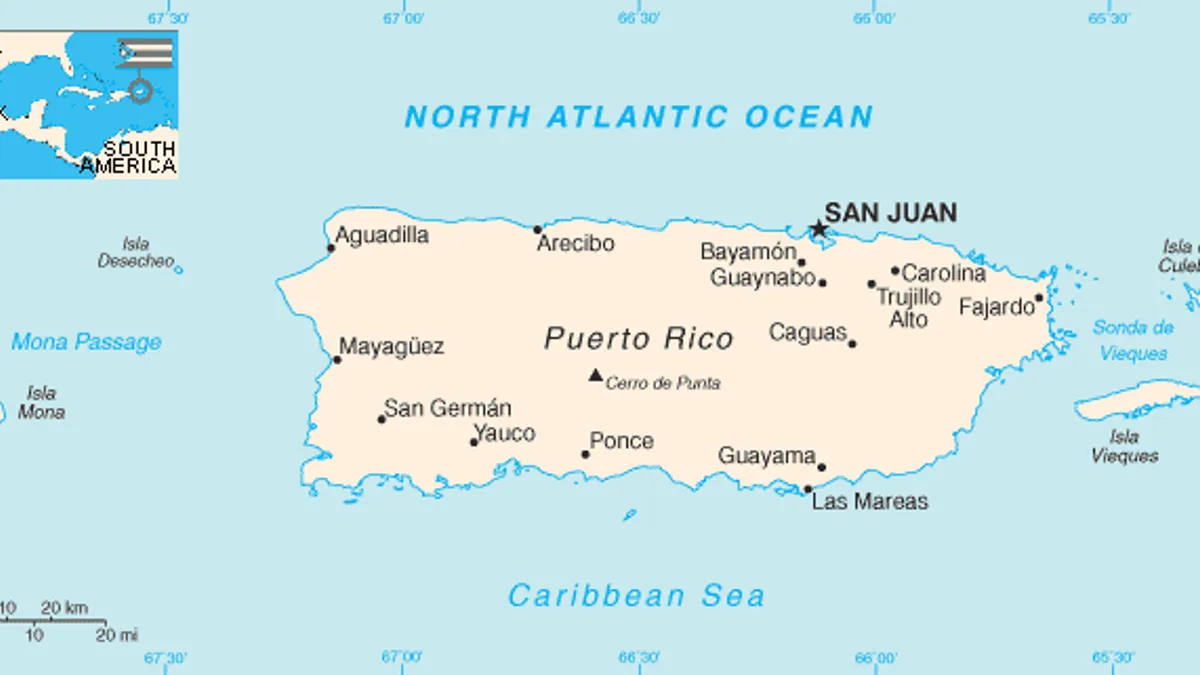Dive Brief:
- Puerto Rico Gov. Alejandro Garcia Padilla promised to move the island’s approximately $0.24 per kilowatt-hour electricity price down toward the average mainland electricity price of $0.12 per kilowatt-hour.
- Puerto Rico Electric Power Authority (PREPA), the biggest U.S. public-power utility by customers and revenue, intends to lower its electricity price by transitioning from oil as an electricity generation source to natural gas and renewables.
- To make it possible to integrate more renewables into Puerto Rico’s grid, a recent law requires all new renewable projects to have enough storage to provide 45% of the plant's maximum capacity for 60 seconds and 30% of its rated capacity for 10 minutes.
Dive Insight:
Like Hawaii, where the power price is an estimated $0.38 per kilowatt-hour, Puerto Rico’s high electricity price is due to having little of its own generation resources and therefore being forced to import oil to power its grid.
PREPA and Autoridad de Energía Eléctrica, the island's government-owned utility, intend to add a total of 600 megawatts of renewables in 2014.
The Governor’s push to cut electricity prices is part of a larger effort to bring back the U.S. territory’s struggling economy, which has floundered since 2006.
Puerto Rican lawmakers recently established an independent board to review PREPA rates after its $9 billion debt was downgraded to junk in February by two of the three largest credit-rating firms and it was forced to use $100 million from its capital budget to purchase fuel in May.














